
Greater
Gotham

V OLUME T WO OF THE G OTHAM S ERIES

Greater
Gotham

A History of New York City from 1898 to 1919
Mike Wallace


Oxford University Press is a department of the University of Oxford. It furthers the Universitys objective of excellence in research, scholarship, and education by publishing worldwide. Oxford is a registered trade mark of Oxford University Press in the UK and certain other countries.
Published in the United States of America by Oxford University Press 198 Madison Avenue, New York, NY 10016, United States of America.
Mike Wallace 2017
All rights reserved. No part of this publication may be reproduced, stored in a retrieval system, or transmitted, in any form or by any means, without the prior permission in writing of Oxford University Press, or as expressly permitted by law, by license, or under terms agreed with the appropriate reproduction rights organization. Inquiries concerning reproduction outside the scope of the above should be sent to the Rights Department, Oxford University Press, at the address above.
You must not circulate this work in any other form and you must impose this same condition on any acquirer.
Library of Congress Cataloging-in-Publication Data
Names: Wallace, Mike, 1942 author. | Burrows, Edwin G., 1943 Gotham.
Title: Greater Gotham : a history of New York City from 1898 to 1919 /
Mike Wallace.
Description: New York, NY : Oxford University Press, 2018.
Identifiers: LCCN 2017005224 | ISBN 9780195116359 (hardback : acid-free paper)
ebook ISBN 9780199911462
Subjects: LCSH: New York (N.Y.)History18981951.
Classification: LCC F128.5 .W227 2018 | DDC 974.7/104dc23 LC
record available at https://lccn.loc.gov/2017005224
Cover: C. S. Hammond & Company, Birds Eye View of New York and Vicinity, 1912. (New York Public Library, Lionel Pincus and Princess Firyal Map Division)
Front endpaper (Wall Street 1911): G. W. Bromley and Walter S. Bromley, Plate 1: Bounded by Liberty Street, Maiden Lane, East River (Piers 114), South Street, Battery Park, and Hudson River (Piers 237), West Street, 1911. (New York Public Library, Lionel Pincus and Princess Firyal Map Division)
Back endpaper (Lower East Side, 1911): G. W. Bromley and Walter S. Bromley, Plate 5: Bounded by Broome Street, Attorney Street, Division Street, Chatham Square, Park Row, Pearl Street, and Centre Street, 1911. (New York Public Library, Lionel Pincus and Princess Firyal Map Division)
9 8 7 6 5 4 3 2 1
Printed by Edwards Brothers Malloy, United States of America
A mi querida esposa, Carmen Boullosa

Contents



A Hot Night on the East SideSeeking Relief on the Roofs. E. Idell Zeisloft, The New Metropolis: Memorable Events of Three Centuries, 16001900; from the Island of Mana-Hat-Ta to Greater New York at the Close of the Nineteenth Century , 1899.
ON NEW YEARS EVE 1897, thousands of people turned out in Union Square, braving a cold and driving rain, to march in a celebratory parade. By 10:00 p.m. the dignitary-filled carriages, regimental bands, singing societies, civic organizations, trade associations, and ethnic groups (among them Cuban, German, Hungarian, Irish, and Italian) had taken their places on cross streets to the east and west of the square, waiting to feed into the line of march. The illuminated floats were also ready to roll, some commercial (sponsored by Broadway theaters, the fruit trade, the Siegel-Cooper department store), others political, like the Democratic Partys, which bore a giant mock-up of its Tammany Tiger mascot, equipped with electric eyes.
At 10:15, umbrellas aloft, the procession set off from Everett Housea famous old hostelry at Fourth Avenue and 17th Streetand began wending its way down Broadway, heading for Manhattans City Hall Park. There the walkers would link up with thousands more celebrants, already assembled, and together take part in one of the greatest Festivals of Connection in the citys history.
It had long been a civic tradition for Gothamites to take to the streetsin disciplined hierarchical ranks or milling free-form crowdsto hail the establishment of some new link that promised to enhance the flow of people or commerce into their rapidly burgeoning city.
New Yorkers had gathered in 1788 to acclaim the new federal constitution. Five thousand men and boys, representing sixty-odd trades and professions, marched with floats and banners forecasting the prosperity that would accrue to Gotham from membership in a stronger national union. This Federal Ship Will Our Commerce Revive, read a ship joiners banner, And Merchants and Shipwrights and Joiners Will Thrive.
Gothamites had gathered again in 1825 for the official opening of the Erie Canalhailing a link between the granary of the Midwest and their Hudson River gateway to the sea, which its promoters forecast would make New York one of the greatest commercial cities in the world. An aquatic assemblage of vessels greeted the Seneca Chief , a canal boat just arrived from Lake Erie bearing casks of lake water that were ceremoniously poured into the harbor (a wedding of the waters) while the Batterys guns boomed and citizens cheered from wharves and rooftops. A land parade followed immediately, with professionals and artisans bearing their respective standards and the implements of their arts trooping from the Battery up to City Hall through streets packed with more than 100,000 people, nearly two-thirds of the population. Finally a huge nighttime throng elbowed into the park to gawk at a City Hall lit up with 1,542 wax candles and 764 oil lamps, to gaze at glowing transparencies depicting the canal, and to gasp at a dazzling display of fireworks.
In 1838 there was a spontaneous and exuberant rejoicing at the landfall of the Sirius , a paddle-wheeled steam packet nineteen days out of Cork, and the arrival a scant four hours later of a second steamer, the Great Western , fourteen days out of Bristol, making it doubly clear that New York would extend its domination of the transatlantic sea lanes from the age of sail into the era of steam.
In 1842 vast numbers assembled to cheer the opening of the Croton Aqueduct, bringing water to a parched and flammable Manhattan (at that point still coterminous with New York). A parade five miles long, pronounced the largest procession ever known in the city, made its way down Broadway into Park Row with noisy jubilation, as church bells pealed and a 100-gun salute attended the eruption of a 50-foot plume of water from a fountain in City Hall Park.
Next page
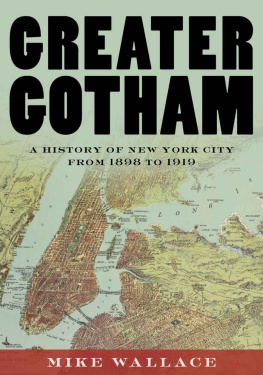

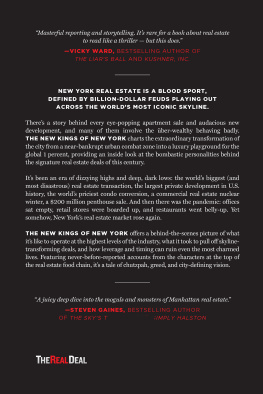
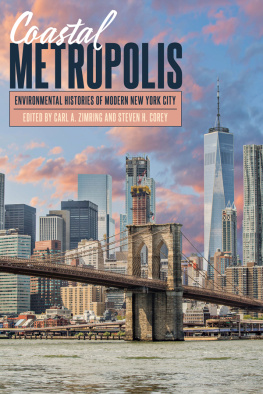

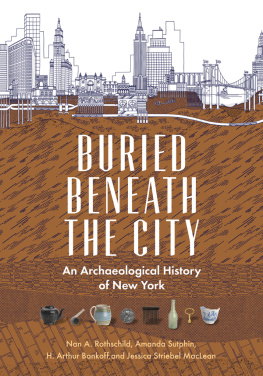
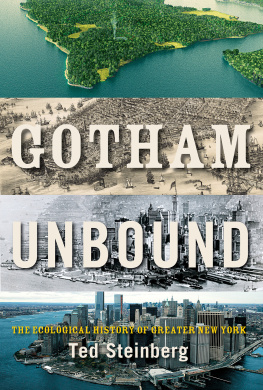

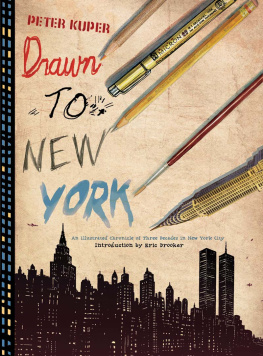



 A Hot Night on the East SideSeeking Relief on the Roofs. E. Idell Zeisloft, The New Metropolis: Memorable Events of Three Centuries, 16001900; from the Island of Mana-Hat-Ta to Greater New York at the Close of the Nineteenth Century , 1899.
A Hot Night on the East SideSeeking Relief on the Roofs. E. Idell Zeisloft, The New Metropolis: Memorable Events of Three Centuries, 16001900; from the Island of Mana-Hat-Ta to Greater New York at the Close of the Nineteenth Century , 1899.